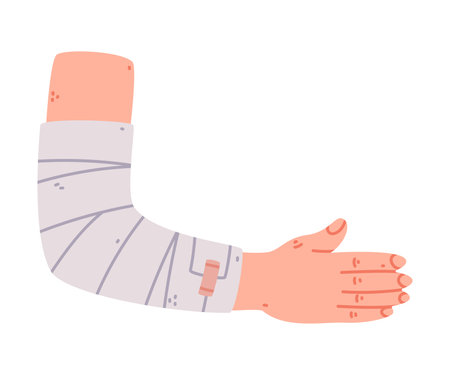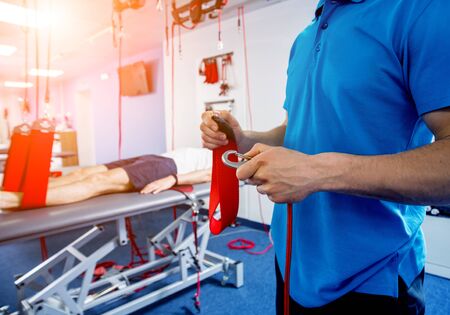Understanding Common Workplace Injuries
Working in a modern American office usually means spending long hours at a desk, using computers, and attending meetings. While these tasks may seem low-risk, they often lead to several types of injuries over time. Let’s break down the most common workplace injuries seen in offices across the United States.
Overview of Typical Office Injuries
| Type of Injury | Description | Common Causes |
|---|---|---|
| Repetitive Strain Injuries (RSIs) | Pain or discomfort from repeating the same movement, like typing or using a mouse for hours. | Typing, mouse use, poor workstation setup. |
| Back Pain | Aches or soreness in the lower or upper back, sometimes spreading to the neck and shoulders. | Poor posture, sitting too long, lack of lumbar support. |
| Eye Strain (Digital Eye Strain) | Tired or dry eyes, headaches, and blurred vision after looking at screens for extended periods. | Staring at computer screens without breaks, poor lighting. |
| Carpal Tunnel Syndrome | Numbness or tingling in the hands and fingers caused by pressure on the median nerve in the wrist. | Extended keyboard and mouse use without proper wrist support. |
| Neck and Shoulder Pain | Tightness or pain in the neck and shoulder area. | Sitting with hunched shoulders, improper monitor height. |
Why Do These Injuries Happen?
The typical American office environment encourages sitting still for long periods. Over time, this can cause muscles to weaken and joints to become stiff. Poorly set up workstations or habits like slouching at your desk can make things worse. Many employees also skip regular breaks or forget to move around during the day, increasing their risk of these injuries.
Who Is Most at Risk?
Anyone working at a desk for much of the day is at risk for these injuries. However, people who don’t adjust their chairs properly, use laptops without external keyboards or mice, or ignore discomfort are especially vulnerable.
Spotting Early Signs Matters
Recognizing symptoms early—like occasional wrist pain, a stiff neck, or tired eyes—can help prevent more serious problems down the road. Taking action as soon as you notice any discomfort is an important step toward staying healthy and comfortable at work.
2. Ergonomic Workspace Design
Why Ergonomics Matter in American Offices
Spending hours at a desk is the norm in many modern American workplaces. Without proper ergonomic design, office workers face a higher risk of repetitive strain injuries, back pain, and fatigue. Creating an ergonomic workspace helps prevent these issues and supports long-term health and productivity.
Practical Tips for Arranging Your Workstation
- Desk Height: Make sure your desk allows your elbows to rest at a 90-degree angle when typing or using your mouse.
- Chair Position: Sit with your feet flat on the floor and knees at about hip level. Adjust the chair height so your thighs are parallel to the ground.
- Screen Placement: Place your monitor so the top of the screen is at or just below eye level. Keep it about an arms length away from your eyes.
- Keyboard and Mouse: Keep them close to your body, so you don’t have to stretch your arms forward. Wrists should remain straight while typing.
Selecting the Right Chairs and Desks
The right furniture is key for injury prevention. Here’s a quick comparison of common features to look for when shopping for office chairs and desks:
| Chairs | Desks | |
|---|---|---|
| Adjustability | Height, lumbar support, seat depth, armrests | Height (sit/stand options), width, legroom |
| Support | Cushioned seat, backrest with lumbar curve | Smooth edges, sturdy surface, enough space for equipment |
| User Comfort | Breatheable fabric, swivel base, easy mobility | Sufficient workspace for tasks without cluttering |
Quick Setup Checklist for Your Desk Area
- Your monitor is at eye level and directly in front of you.
- Your chair supports your lower back and allows your feet to rest flat.
- Your keyboard and mouse are easy to reach without stretching.
- You can easily switch between sitting and standing if using a sit-stand desk.
- Cables are managed neatly to avoid tripping or tangling.
Remember:
An ergonomic workspace isn’t just about comfort—it’s an investment in your health that can help prevent common workplace injuries. By making simple changes to your office setup, you’ll create a safer and more productive environment.

3. Promoting Movement and Active Breaks
Why Movement Matters in the Office
Sitting for long periods is common in American offices, but it can lead to aches, pains, and even long-term injuries. Encouraging regular movement helps prevent these issues and keeps employees healthier and more productive.
Simple Ways to Get Moving at Work
There are many easy habits you can build into your workday to fight sedentary behavior. Here are some popular strategies:
| Strategy | Description | How Often? |
|---|---|---|
| Standing Meetings | Hold meetings while standing instead of sitting around a conference table. This keeps energy levels up and makes meetings shorter and more focused. | Once or twice a day |
| Stretching Exercises | Do simple stretches at your desk or in a break room. Focus on neck, shoulders, back, and legs to relieve tension. | Every 1-2 hours |
| Scheduled Breaks | Set reminders to get up, walk around, or do light activities away from your desk. | Every hour for 5 minutes |
| Walking One-on-Ones | Take one-on-one meetings as walking discussions instead of sitting in an office. | Whenever possible |
| Use Sit-Stand Desks | If available, alternate between sitting and standing throughout the day using an adjustable desk. | A few times each hour |
Tips for Building Healthy Habits
- Use Apps or Alarms: Set up calendar alerts or use wellness apps to remind you when it’s time to move.
- Create Group Challenges: Organize step-count competitions or stretching sessions with coworkers for motivation.
- Personalize Your Routine: Choose the activities that fit best with your team’s workflow and preferences.
The American Office Culture Shift
Many U.S. companies are recognizing the benefits of active breaks and movement-friendly policies. By making small changes—like swapping out a sit-down meeting for a walking meeting or encouraging stretch breaks—offices can support employee well-being and reduce injury risks over time.
4. Technology and Tools for Injury Prevention
Modern American offices are embracing technology to help prevent injuries and promote healthier work habits. By using a mix of apps, wearable devices, and smart office equipment, employees and employers can create a safer, more comfortable workspace. Here’s how different types of technology support injury prevention in today’s workplace:
Leveraging Apps for Healthy Habits
There are many mobile apps designed to remind users to take breaks, stretch, or adjust their posture throughout the day. These apps can be personalized based on individual needs and schedules, making it easier to develop consistent healthy habits at work.
| App Name | Main Function | Benefit for Office Workers |
|---|---|---|
| Stretchly | Break reminders | Reduces risk of repetitive strain injuries |
| Ergonomics by TMC | Posture guidance | Encourages proper sitting positions |
| Stand Up! | Movement alerts | Promotes regular standing and walking breaks |
Wearable Devices for Real-Time Monitoring
Wearables like smartwatches and fitness trackers have become popular tools in American offices. These devices monitor activity levels, heart rate, and even remind users to move if theyve been sedentary too long. Some models offer specific features like posture tracking or vibration alerts when you’re slouching.
| Device Type | Main Features | How It Helps Prevent Injuries |
|---|---|---|
| Smartwatch (e.g., Apple Watch) | Sedentary alerts, activity tracking | Encourages regular movement throughout the day |
| Posture Tracker (e.g., Upright GO) | Posture monitoring, vibration feedback | Helps maintain correct posture and reduces back/neck pain |
| Fitness Band (e.g., Fitbit) | Step counting, reminders to move | Keeps employees active and aware of daily activity goals |
Innovative Office Equipment for Ergonomics
The right office equipment makes a big difference in preventing injuries. Modern workplaces often use adjustable desks, ergonomic chairs, and accessories like footrests or monitor stands. These items help workers maintain good posture and reduce physical strain during long hours at the desk.
| Equipment Type | Main Functionality | Injury Prevention Benefit |
|---|---|---|
| Sit-Stand Desk | Easily switch between sitting and standing positions | Lowers risk of lower back pain and improves circulation |
| Ergonomic Chair | Lumbar support, adjustable height/arms/backrest | Supports spine health and comfort during extended sitting periods |
| Monitor Stand/Riser | Lifts screen to eye level | Prevents neck strain from looking down or up at screens all day |
| Anti-Fatigue Mat (for standing desks) | Cushions feet while standing at a desk | Reduces fatigue and discomfort during prolonged standing sessions |
The Role of Employers in Tech Adoption
A growing number of American companies provide access to these technologies as part of their wellness programs. Encouraging employees to use apps, wearables, and ergonomic equipment is an investment in productivity and overall well-being. Involving staff in choosing which tools suit them best also helps create a positive culture around health and safety at work.
5. Fostering a Safety-First Office Culture
Why Office Culture Matters for Injury Prevention
Building a safety-first culture in the modern American office isnt just about posting rules on the wall. Its about making safety and injury prevention part of everyday work life, where everyone feels responsible for their own well-being and that of their coworkers. When managers and HR lead by example, employees are more likely to take injury prevention seriously.
Strategies for Managers and HR
There are several practical ways to keep injury prevention top-of-mind in your office. Here’s how managers and HR can take action:
| Strategy | Description | Example |
|---|---|---|
| Regular Training Sessions | Offer ongoing training focused on safe office practices, ergonomics, and equipment use. | Quarterly workshops on proper desk setup or lifting techniques. |
| Open Communication Channels | Create easy ways for employees to report hazards or suggest improvements. | Anonymous suggestion boxes or dedicated Slack channels for safety tips. |
| Visible Safety Reminders | Use posters, emails, and digital displays to keep safety tips front-and-center. | Monthly email reminders about common office injuries and how to avoid them. |
| Leadership Involvement | Have managers participate in safety initiatives to show they care. | Managers join ergonomic assessments or lead by example during drills. |
| Acknowledgment & Rewards | Recognize employees who contribute to a safer workplace. | Gift cards or shout-outs in team meetings for proactive safety actions. |
The Role of Ongoing Awareness
Cultivating an ongoing sense of awareness is key. This means that conversations about safety should be regular—not just once a year. When people see that management genuinely values their health, theyre more likely to speak up about potential risks before they become real problems. Open dialogue helps address concerns quickly and makes everyone feel like theyre part of the solution.


